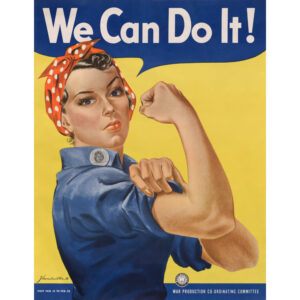Art is something that is perceived almost subconsciously and can influence a person’s values and view of the world. It is used for many things: to promote war, to oppose war and to recover from it. So, just like Slavenka Drakulić, a Croatian journalist, said: “History proves over and over again that culture is ideally suitable for political propaganda”.
March 17, 2023
How political art is used to influence people

'Rosie the Riveter'
Art, as a reflection of an artist’s view of the world, is influenced by the events happening around them, including politics and wars. And just like art, propaganda is also influenced by them.
Propaganda, as it is known, is the dissemination of information to influence public opinion.
Whether it is a war or a celebration, the emotions experienced can be found in the paintings or sculptures of its time. As it was told by Angel Fernandez, an art professor, that is one of the reasons why art exists at all.
'We Can Do It!'
The famous ‘Rosie the Riveter’ poster was commissioned in 1943 by a US manufacturing company to boost female worker morale.
Yet, it is foremostly known because it was rediscovered in the 1980s and used to promote feminism and other political issues.
Since ancient times, art has been used as propaganda. The Mortuary Temple of Hatshepsut was filled with 200 statues of the pharaoh, often depicting her with masculine features. The artwork was intended to idolise her in order to convince people that she was a worthy leader. Later, this propaganda was described by Graciela Gestoso Singer, an Argentinian historian.
In the Battle of Issus, a painting made in the 4th century BC, Alexander the Great is portrayed without armour to show the people how invincible he was. This topic was raised in the works of Nicholas Hammond, a British historian.
Using art as propaganda gained popularity in World War I, where mass media played a significant role in news promotion.

Kitchener World War 1 Recruitment poster
One of the main examples of this is the poster of the British Army with the text on it saying “Your country needs YOU”, with a War Secretary pointing at the viewer.
Later, due to its success, recruitment posters with similar postures appeared. For example, with Uncle Sam in the US or with a soldier from the Russian Red Army, pointing and looking directly at the viewer.
During World War 2, the Nazis manipulated the people into assuming the perception of the Jews, Romani people and homosexuals which was in line with goals of their politics. For example, one of the posters shows a finger pointing at a Jew, saying, “He is to blame for the war!”



